
Part 1
A break in the clouds as I awoke and there it was, far below: unexpected. From my internet map journeys I knew it instantly, the solitary bridge across the muddy river and the little town clustered ’round its west bank, the long, Roman straight road leading to it, the absurdly huge railway marshalling yard in the middle of nowhere and on the eastern bank a green dome, much smaller than I expected even from this great height and, from this perspective, no hint of the hill I knew it stood on. I hoped to be there in a couple of days time but for now, as the plane continued its descent into Franz Liszt Airport I had to content myself with a drowsy vision of me falling from a static, vertiginous camera point of view, caught mid frame like the Coyote in the Road Runner cartoons, my little arms and legs akimbo figure shrinking smaller and smaller with a whistling bomb soundtrack, a dot and then invisible until a splash appeared in the Danube, a moment of silence, followed by a distant comedy “spla-tosh” effect announcing my touch down in the torrent.

That evening just after sunset I met Sarah at the Angelika bar right by the river. She was a friend from work who was coincidently in Budapest too on her final stop on an inter-rail tour. As we sat outside under a large brolly, drank and chatted, the gothic, almost monstrous looking Parliament Building (once crowned by a massive red star) across the Danube slowly became illuminated, its spotlights attracting flocks of gliding gulls which resembled fireflies silently hovering around a wedding cake. A “frantic and marvellous pile”, Patrick Leigh Fermor wrote of it, “Architectural dash could scarcely go further.” In April 1934 the nineteen year old pilgrim stopped in Budapest for ten days during his walk across Europe from the Hook of Holland to Istanbul, immortalising his experiences some forty years later in the second book of his brilliant tramping trilogy, Between The Woods and the Water.
None of the drinking dens his toff chums took him to were, as far as I knew, still in existence, however I like to think Paddy (as Fermor was known to his friends) would have approved of our next destination. Sarah had heard of a “ruin” bar over the river in Pest called Szimpla Kert. I had read about ruin bars in Nick Hunt’s book, Walking the Woods and the Water, his 21st century re-enactment of Fermor’s hike. From her description I thought it sounded a bit “touristy” but as soon as we were inside the building no gob was left un-smacked between the pair of us. A ruin it was indeed, crumbling, labyrinthine, a 19th century townhouse rambling over two stories with a balcony running around what would have been originally a courtyard. Almost every room contained its own bar, its own decor, its own music and atmosphere, all winking neon and fairy lights, video installations, wild style graffiti and street art, with complicated cocktails or simple pints of lager on sale. Young locals mixed with voices from all over the world (yeah, alright, tourists) and you could stray into which ever part of the building you liked, drinks in hand, absorb the scene and become part of it, inspiring talk of other places we had been (Sarah is far more widely travelled than I) and future plans (me, more Italia, she, orang-utans in Borneo).
When I lived in Moscow I had been to a squat bar a few times famously overseen by an eccentric midget with a nostalgic passion for Vladimir Ilyich Lenin. He dressed in tiny, home made uniforms, his chest usually covered with old Soviet medals and badges. His wife, who was a little person too usually painted her face silver for some reason. However that place, full of creepy nationalists who talked of “Russia for the Russians” while wearing expensive Italian suits and sipping Swedish vodka was an utter dump compared to this, the Palace of all ruin bars.
I awoke next day in my Váci utca apartment suitably hung-over. Sadly there was no Alsatian dog called Tim and fourteen year old boy called Micky to greet me with a bottle of Alka Seltzer as Fermor had on his first groggy morning in the city, “My ma says you’ll probably need these.” When I stepped out to see the place in daylight, I was again following not just in Paddy’s footsteps but Mozart’s teeny shoes. Wolfgang Amadeus was just 10 years old when he played in a house on Váci utca, now a pedestrianised (but really rather cosy with it) tourist trap. I wondered if Matuschek and Company had been on this street in the beautiful movie by the Berlin director Ernst Lubitsch, The Shop Around the Corner (Set in Budapest but filmed entierly in Hollywood); it seemed like the kind of place you’d expect it to be (“or not to be” – Lubitsch gag) but when I got back to London I found out no, and anyway this was the wrong season to be thinking about that Christmas treat.
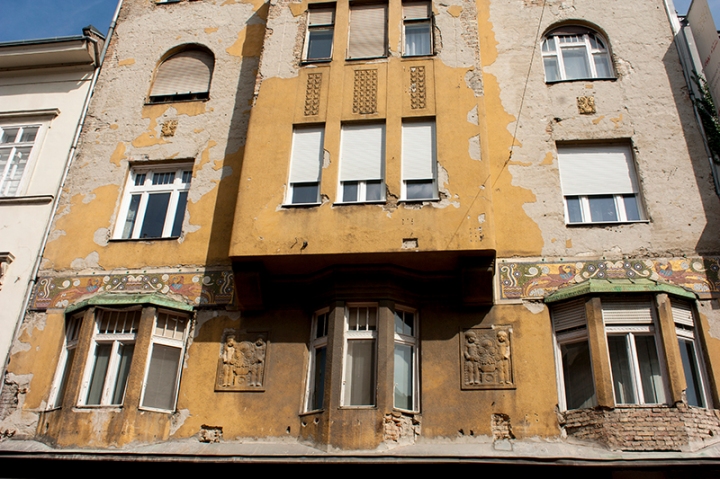
In the 1956 revolution it had been very different as a spontaneous parade, “on that fateful Tuesday evening” surged from here “as if they were eager to let everyone know, not just the crowd but, via the dark autumn sky, the whole world, that that is where they are coming from: straight from the dingy, industrial Váci Road, in fact straight from the showers, with their hair still wet”, as an unreliable narrator tells us in A Book of Memories, by Péter Nádas.

Walking up river and crossing the Erzsébet híd to Buda, I was soon out of breath from toiling up one of the zigzag flight of steps Paddy mentions, finding myself at the top of the Castle Hill plateau in the Várnegyed district. I made for the Fisher Bastion for its views back over Pest of which Fermor “never tired”.
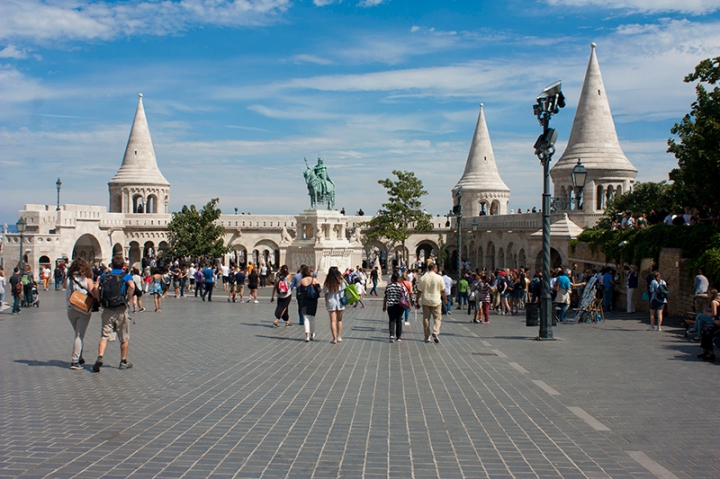
I doubt it was such a tourist mobbed part of town when he was here (or that he had to pay to see the view for that matter).

He kipped just a short stroll away from here on the lovely Uri utca, “a waving street of jutting windows, tiled roofs and arched doors with coats of arms”.

Still a quiet part of town today, “Perched above the din of the capital, this patrician quarter had something of the hush of a country town, and the houses, inhabited by the same families for generations, were called Palais so-and-so, including the charming one which harboured me.”

Exactly just which Palais so-and-so I didn’t know. I could only slowly pace the Uri utca, wondering what on Earth it had been like to be here as a teenage boy, not long after leaving school (or, in Paddy’s case, being expelled) in such a foreign setting, and with a night out at the ball with the no doubt lovely “Annamaria” to look forward to. *
I quickly discovered the square with the equestrian statue of Andreas Hadik, but was sad to find no trace of the “snug Kávéház, a coffee house” where Paddy spent a morning reading, writing, sheltering from the rain and miss-translating a Magyar newspaper headline, “O boldog Angolország.” A modern looking building stands in its place with an upmarket bistro called Ramazuri on the ground floor, sharing the piazza with a Jamie’s Italian Restaurant. Even the bronze sculpture couldn’t have been the same one Paddy clapped eyes on, I noticed the foundry date on it was “1936”. Presumably it must be a replica of the one that was here that April morning in 1934?

Further down the Uri utca I spotted a tiny, wide eyed and excited girl clutching a soft toy emerge with her parents from a doorway and noted the sign above, “Prison Cave of Dracula”. Looking it up now online I wish I hadn’t given it a miss, it looks brilliant, part of the miles of tunnels dug into the limestone hill. Next, just off Uri utca I passed the Harry Houdini museum. I hadn’t realised he had been born in Budapest, he always seemed so “American”. Other notable Hungarians (most of them Jewish, most of them from Budapest, some from parts which were once in the Kingdom of Hungary which changed hands after WWI) include film directors István Szabó and Béla Tarr (though I have yet to see one of Tarr’s movies), Endre Friedmann (photographer Robert Capa), composer Béla Bartók, Manó Kaminer (film director Michael Curtiz), László WeiszI (artist László Moholy-Nagy), János Weissmüller (Olympic swimmer and movie star Johnny Weissmuller), composer Miklós Rózsa, Gyula Halász (photographer Brassaï), György Schwartz (businessman and philanthropist George Soros), Sándor László Kellner (film producer and director Sir Alexander Korda), Günszberg Dénes (scientist and Nobel prize winner Dennis Gabor), Béla Ferenc Dezső Blaskó (actor Bela Lugosi), Andor Kertész (photographer André Kertész), pioneer of solar power technology Mária Telkes, László Löwenstein (actor Peter Lorre, I wonder if he and Michael Curtiz chatted in Magyar which making Casablanca together?), serial killer Countess Elizabeth Báthory de Ecsed, writer and Nobel Laureate Imre Kertész, cinematographers Vilmos Zsigmond and László Kovács, porn star and politician Ilona Staller (better known by her Italian stage name Cicciolina), László József Schweiger (László Bíró, inventor of the ballpoint pen), György Pál Marczincsak (film maker George Pal), Ernő Rubik, inventor of that fucking annoying cube thing and of course Ferencz Liszt (composer Franz Liszt).

I hastened on to the Castle only to find the area swarming with mobs of builders, chippies, sparks and riggers, like a medieval besieging army of engineers but with peaceful intent – they were preparing temporary stalls for an upcoming wine festival. Power cables and strips of astro-turf covered the terrace dominated by another equestrian statue, this time of Prince Eugene of Savoy, the famous general of Austria’s armies, Prinz Eugen (British schoolboys of a certain age will remember the Aifix kit of the war ship named after him).

Vienna Flashback
Though I didn’t know it at the time, I had been in one of Eugene’s houses, his grandest in fact, the Upper Belvedere Palace in Vienna. Paddy had been through Vienna too, naturally, in A Time of Gifts, arriving on February 14th, 1934 to the sound of gunfire on Valentine’s night, the rumblings of a far right terrorist attack which had began a few days earlier. He was broke and crashed in a hostel for homeless men where he teamed up with one of his journey’s most memorable characters, “Konrad”.

Back in December 2010 when I arrived in Vienna if I was aware of Major Patrick Leigh Fermor, DSO, at all it was through the disappointing and ill fated Michael Powell and Emeric Pressburger movie, their final collaboration, Ill Met By Moonlight, where he was played by a badly cast Dirk Bogarde. Or through the riotous episode in Michael Powell’s second volume of memoirs, Million-Dollar Movie, where he meets Fermor in Athens in 1950, gets hammered on retsina and ouzo and breaks into the grounds of the Acropolis with him to see it “by moonlight” where they end up being arrested. Fermor bursts from the paper hoops of Powell’s pages like a lion shot from a canon. “He was a brilliant storyteller and entertainer, but I had read his fastidious prose and knew that he was an artist.” Powell wrote of him. Powell and Pressburger’s interest in Fermor stemmed from his audacious exploits in Crete in WWII, when disguised as a local shepherd he took part in and led guerrilla operations against the Nazis, cumulating in 1944 with the kidnapping and removal to Egypt of the general in command of the island.
William Stanley Moss, Fermor’s fellow British officer in the operation had written the book Pressburger based his screenplay on. Director Michael Powell had worked for two decades with writer Emeric Pressburger under the name of the production company “The Archers”, and together the pair, never taking individual credits for writing, producing of directing, made some of the finest films ever made in Britain or anywhere else in the world, A Matter of Life and Death, The Red Shoes, 49th Parallel, I Know Where I’m Going, Black Narcissus, A Canterbury Tale and The Life and Death of Colonel Blimp to name a few – masterpieces all. Pressburger’s “Heil Hitler” monologue, spoken by Viennese actor Anton Walbrook in The Life and Death of Colonel Blimp, made in 1943, is arguably the greatest speech ever written for an English language film. Emeric was born Imre József Pressburger, of Jewish heritage, in Miskolc. Screenwriter, novelist, director and producer, another famous Hungarian.

In the last couple of weeks of his Vienna sojourn Paddy met “a marvellously beautiful girl” called Ailsa McIvert with whom he explored the art galleries (including the Belvedere). I met up with Sophie, my marvellously beautiful friend from our college days, a photographer who was keen to catch the same exhibition of paintings by Frida Kahlo I had seen in Berlin that summer (Sophie had lived in the Americas and had already visited Frida’s house in Mexico City). Together we also went to Prince Eugene’s old gaff, the Belvedere, to see it’s famous collection of paintings and as I was also in Vienna to record a few more Nicholas Roeg film locations, on this occasion from Bad Timing, there was one art work here I was especially anxious to finally see, Gustav Klimt’s The Kiss.
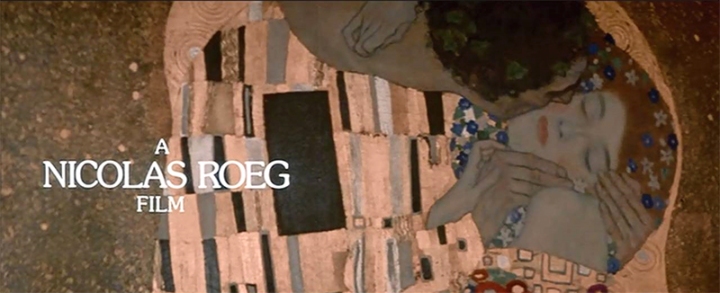
Theresa Russell’s character Milena has a reproduction poster in her apartment of that great golden icon which tower’s above the whole movie, and she’s there in the fifth shot in the film, in the very same room in the Österreichische Galerie the artwork still hangs today (though on a different wall), the rolled up reproduction poster in her hand and for years in my various flats I too had that image of lovers under the spell of each other on display somewhere.

Egon Schiele, Gustav Klimt, the music of Tom Waits and Keith Jarrett, Roeg’s movie introduced them all to me when I saw it for the first time as a teenager at the Glasgow Film Theatre around 1981.










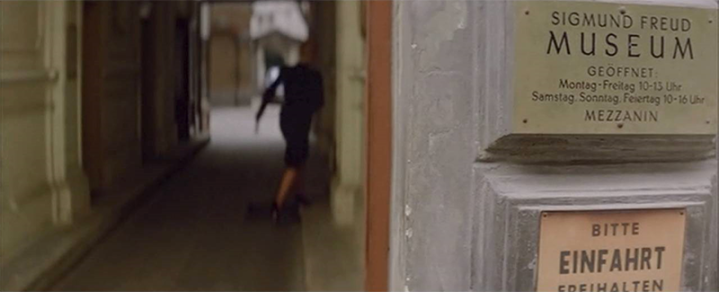



Not since Michael Powell has a British director been so obsessed with the celebratory lineaments of the sensual and the erotic. Danke!
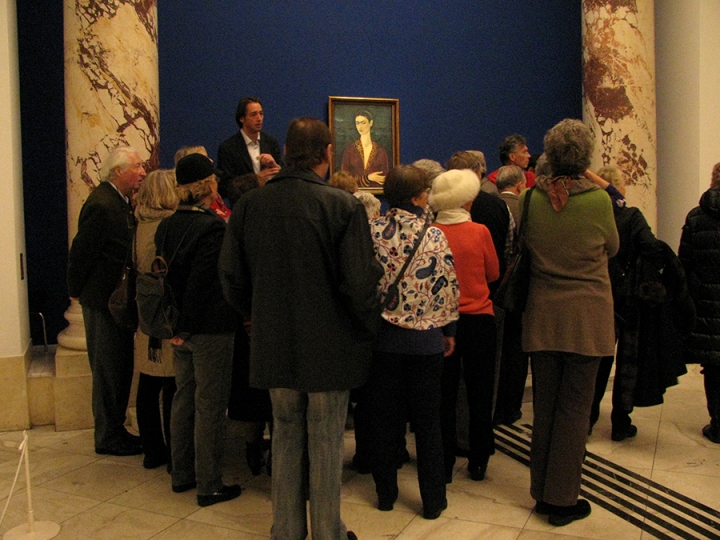
The other major film set in Vienna was of course The Third Man and I was eager to track down some locations from that movie too. Near the rather small and over crowded Bank Austria Kunstforum where we saw the Kahlo exhibition was the doorway where Orson Welles makes his famous first appearance in Carol Reed’s picture, though I hadn’t realised looking at the map that it was up such a steep hill. Twice I think I slid on my arse as we wobbled up the icy tor called Schreyvogelgasse where we found the door and Sophie snapped a photo of me as it chucked it down with snow.


The street name translates as “Shriek Bird Lane” and I know this now because (of course) Patrick Leigh Fermor lived here for a few days “in a gaunt and fascinating rookery” after Konrad had headed north and Paddy unexpectedly received some birthday money from his distant father.

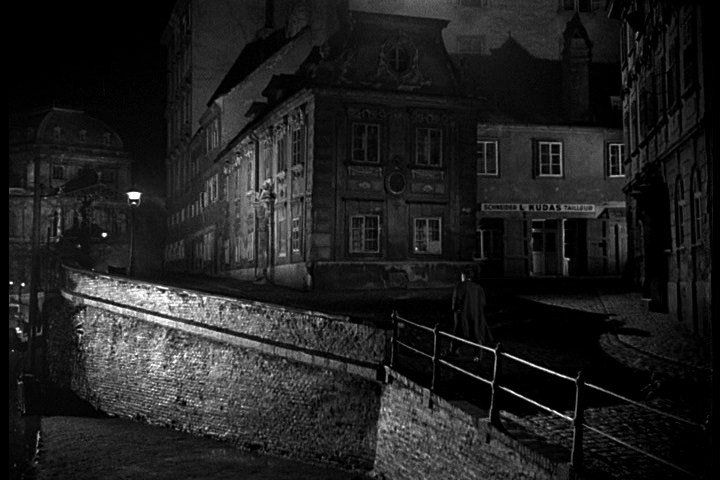
Odd though that he fails to mention in A Time of Gifts that Ludwig Van Beethoven lived for eight years just round the corner in the Pasqualatihaus, a thirty second or so crump away from “The Third Man door” (and presumably even less from his “rookery”). Perhaps he didn’t know?











Prince Eugene had ridden to Vienna as a young cavalry officer in 1683 as part of the relieving force which defeated the vast, besieging Ottoman host camped around the city walls. In later life as leader of the Habsburg army and it’s allies he would inflict a series of crushing defeats on the Turks, driving them back behind the fortress of Belgrade which he took from them in 1717, bringing him fame and enormous wealth. If he is known at all in Britain (apart from that Airfix model kit) it is as Marlborough’s (often downplayed) co-commander in the victorious battles against the troops of Louis XIV in the baffling War of Spanish Succession. Eugene was himself French and took enormous, life long relish in causing the “Sun King” who personally insulted him and his family to forever rue that day.

Back In Budapest
While he could be said to have decisively liberated Hungary from the Ottomans in the early eighteenth century, he was still only a junior officer when he took part in the successful 1686 siege of Buda, ending the hundred and forty seven year rule of the Sultans. Eugene spent very little time in Budapest (though he owned the island of Czepel just south of the city), so why is there a giant statue of this Frenchman on a terrace named after the House of Savoy (in Italy) outside this Magyar royal castle? It was apparently designed by Róna József for the Serbian town of Senta where Eugene won another great victory against the Turks. The town couldn’t afford the price however, and in 1900 it was placed here “temporarily” where, one hundred and seventeen years later it still stands. Paddy, usually a lover of military minutia barely mentions him though in either A Time of Gifts (maybe once) or Between The Woods and the Water (five or six times).**

Leaving the castle I climbed past the waterfall and up the Citadel hill, where I discovered my own favourite views of Budapest, then I headed way back up the Danube and over the Margit híd to a corner of the capital off the tourist map to visit a murder scene. In Between The Woods and the Water Paddy recounts the brief love affair he had with a married Hungarian woman he calls “Angéla”, whom he met in the summer of 1934 in “Rumania” (pre-1970’s spelling). “Our short time together had been filled with unclouded delight”. The last time he saw her was at Deva train station from which she headed back to Budapest (presumably to meet her husband). Now I stood outside one of Angéla’s final addresses at 48 Pannonia Street.

Her real name was Xenia Cszernovits, a “ravishing, dark haired beauty”, adored by all who met her. However. “Once Hungary had become a postwar Soviet satellite state, her life was altered in a way that was unimaginable in 1934. As a ‘class enemy’, she was sent to do menial work as a house painter and later in a textile factory in Budapest. She ended her days in a squalid little basement flat which she moved to after she strangled her former flatmate in a fit of rage in Pannonia Street on 20 December 1969. Such was her popularity with her neighbours that many of them testified in court to the justification of her actions, claiming that the victim was an unbearable woman, thus leading to a reduced charge of manslaughter.” (From Michael O’Sullivan’s unpublished book, Between the Counts and the Comrades.)



At the end of his chapter titled Triple Fugue Paddy imagines, in the way we do of loved ones, Angéla arriving “an hour before midnight, at the East Station in Budapest.” Early next morning I was at this same station, Keleti, to buy a ticket from the International Departures hall on platform six in that brown, crumbly biscuit of a grand Terminal, a dreary whiff of the hostile Soviet style of “customer relations” emanating from some of the older staff. Leaving on the dot at 9.34am my northbound train was soon trundling past the usual suburban factories and low-rise tower blocks to be found anywhere in Europe these days punctuated with chunks of architecture from the 19th and early 20th century graced with oriental touches.
As the city fell behind, the Danube began to peep through the woods as we passed through industrial towns like Vác, where the river makes it’s dramatic bend to the south, and Nagymaros, where a large flight of swallows was darting and hunting insects over a timber yard by the station, still snacking in September before leaving for Africa. Across the muddy river, clutching tightly to the hill was the Upper Castle of Visegrád, looking like something out of Hammer’s most beautifully shot movie, The Brides of Dracula, lacking only a flash of animated fork lighting and crashing music by James Bernard. Paddy passed through Visegrád as he walked to Budapest along the southern Danube bank (and Nick Hunt attempted to sleep rough in the castle) and I yearned to visit the place. Once the capital city of Hungary, in 1462 King Matthias Corvinus had Vlad Dracula arrested and imprisoned here for twelve years. Another couple of famous Hungarians.

An hour and a half or so after leaving Keleti station the train pulled into the sprawling Štúrovo goods yard in Slovakia which I had spotted from the ‘plane a couple of days before. I was in a different country now but hadn’t even noticed leaving Hungary. The station, on a flat, featureless plain in the middle of nowhere, smelled powerfully of pine resin coming from wagons loaded with freshly cut timber. The ticket office had it’s Slovak name emblazoned across it, of course, but also it’s old Magyar moniker, Párkány.

Walking into town along the rigid ruler of a road I noticed all the streets had dual names in these languages which struck me as odd before I remembered the Celtic regions back home have, in the last couple of decades or so, adopted such signs too in English and Gaelic or Welsh.
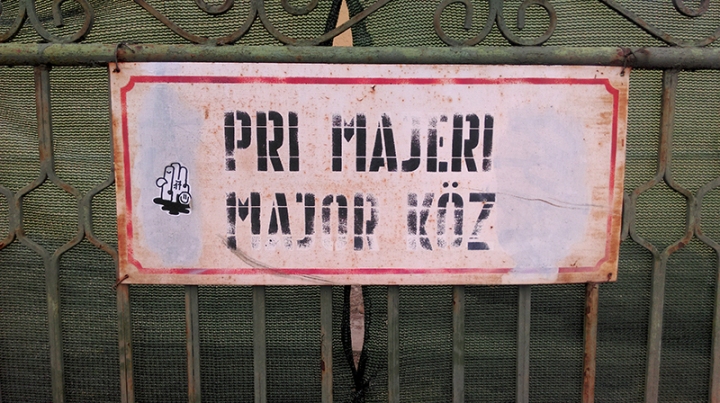
Paddy had made his way to Štúrovo from the west along the riverbank, but in his recreation of the Great Tramp, Walking the Woods and the Water, Nick Hunt cut across country following the rails to the train station before heading into town, so I was walking in his footsteps now. The level land all around was perfect cavalry country and every imaginable invader had been here, the Romans, Attila the Hun, the Magyar, Genghis Khan, the Ottoman Turks with their Tartar raiders, the Nazis and the Soviets. Now I was heading straight for the site of an epic battle.

End of Part 1.
To be concluded.
* I have since discovered it was at number 15, thanks to an arcticle by Michael O’Sullivan posted at patrickleighfermor.org. Also, his favorite coffee house is still there, next door to the modern building which fooled me. It is called Ruszwurm.
** His cheeky footnote in A Time of Gifts on Rene Descartes “unexpected” presence as a private soldier on the winning side at the battle of the White Mountain (outside Prague) in 1620 is my favorite footnote in all literature. Eugene’s reconquest of Belgrade was mentioned in Fermor’s book Mani (first published in 1958).
Part 2 is here
More Nicholas Roeg film locations here












